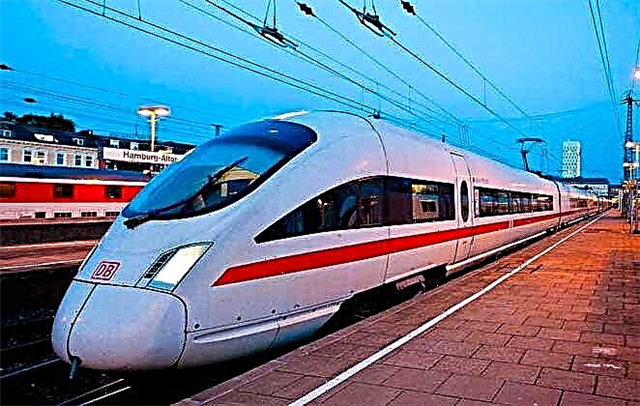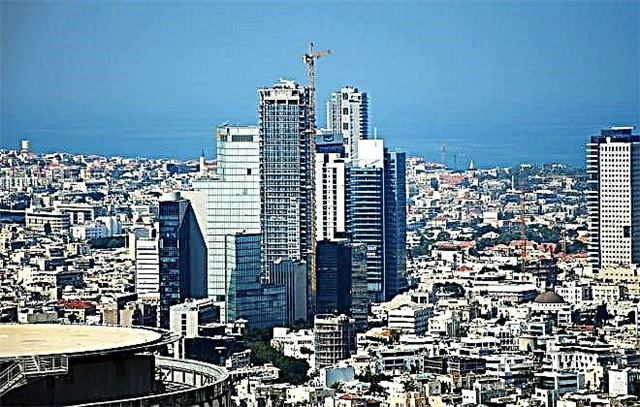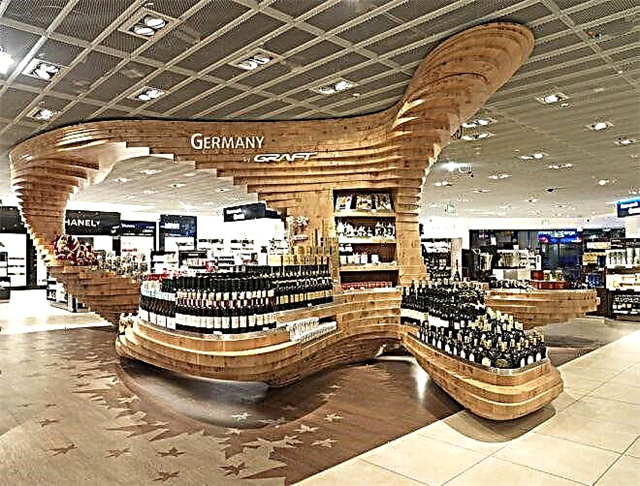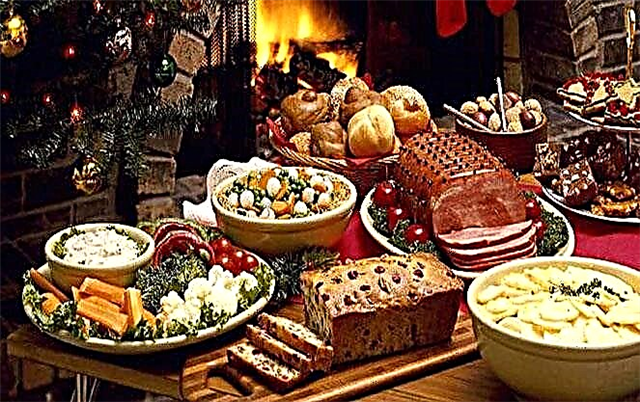The national cuisine of any country can rightfully be called not only an important component of the life of the local population, but also the same attraction as its palaces, monuments and museums. It is no coincidence that when we mention a particular state, many of us have some culinary associations: Japan - with sushi, Italy - with pizza, Greece - with Greek salad. Well, Germany has become famous all over the world for its love for a variety of sausages. However, it would be a big mistake to think that German cuisine is all about sausages, beer and sauerkraut. In fact, it boasts a much wider variety that can satisfy the most discerning palate.

Key features of German cuisine
The culinary traditions of this country go back to the times of Ancient Rome. However, modern German cuisine has developed relatively recently, after the end of the Second World War. Its development took place under the influence of national traditions and cultures of neighboring states.
In addition, politics influenced the formation of the culinary preferences of the Germans. For example, at the turn of the 19th and 20th centuries, Wilhelm II forbade cooking dishes with the addition of wine, oil and spices. It was then that it was believed that the traditional food in Germany is potatoes served with meat, sauce and cabbage. Such food was preferred by the ruler himself, therefore, by his people.
After the end of the First World War, famine began in the country and cooking was completely forgotten, and after the end of the Second World War, its real development began.
Today Germany consists of 16 federal states, each of which has accumulated its own centuries-old traditions of food preparation and nutrition in general.
The cuisine of the German state can hardly be called dietary. Most of the dishes are prepared by frying, stewing, baking. Soups are often prepared by the Germans with the addition of sausages, sausages and small sausages. Even the popular pea soup, they certainly season with a little sausage. An alternative to soups is broths with vegetables, rice, or eggs.

It should be noted that the category of first courses is represented by a huge variety, ranging from light transparent broths and ending with hearty thick dishes, which are usually called "eintopf" here, which means "one saucepan". Such a dish, as a rule, replaces both the first and the second, therefore it is very popular in the cold season.
For the second in Germany, it is customary to serve meat delicacies, mainly from pork. This type of meat is used here:
- razor,
- steak,
- schnitzel,
- chops,
- snellklops,
- shmorbrathen,
- sausages, sausages.
As for the latter, there are about 1.5 thousand varieties of them. They are served both as an independent dish and as a side dish for a salad.
An important detail is the spices. Despite the fact that the Germans are not too inclined to overuse them, many of the local recipes are quite sharp.
Pork dishes are usually served with potatoes. This root vegetable is considered the staple of German cuisine. It is even often called "the second bread". For this reason, you should not be surprised if you are not served a bun or a piece of baked goods with the potatoes.
Meat eaters will certainly appreciate a delicacy called "tartar" - raw minced meat with salt and spices. It is served with an egg hammered into it. Very often this mass is spread on bread and served on the table as a snack.
For the northern regions of the country, fish and seafood dishes are more typical. They are used as ingredients in soups or eaten alone, fried, baked, smoked, or salted.
Fish is often the basis for sandwiches, snacks and salads. Herring served with rice is very popular.
Bread, pastries and sweets are equally popular in Germany. There is a bakery or pastry shop literally on every corner. Moreover, the bread is represented by almost three hundred varieties. To give it a specific taste, the Germans add rye flour to the dough.
The most unusual bread is considered to be called "Pampernickel", which has the consistency of a sticky brown mass.
Sweet is also held in high esteem here. The Germans are very fond of desserts, so with great love they prepare strudels, jelly, puddings, cakes, cookies. The love of the indigenous people for sweets is so great that, according to the calculations, in 1 year every German eats about 34 kg of sugar and about 1.5 kg of honey.
What and where to eat in Germany
German culinary traditions are well known and popular all over the world today. Moreover, each region of the country has its own gastronomic preferences and characteristics. That is, the meal that you will be offered in the north or south of Germany will be different from what the Germans eat, for example, in the central part of the country.
Bavarian traditions
The favorite dish of the Bavarians is rightfully considered to be soup with liver dumplings. As a second course, you will be offered fried pork, which will be served with potato dumplings. An alternative to such a hearty meal can be bavarian sausages fried in a pan.
As for drinks, one should give preference to the famous beer, which is produced in this part of Germany. And where else to try traditional Bavarian beer, if not in Bavaria itself! Pretzel is usually served with beer - a pretzel baked from yeast dough, abundantly sprinkled with coarse salt on top.

However, do not forget that there are many wineries in the north of the region, which means that the "drink of the gods" should also be tasted.
And yet the local cuisine is not only about meat and beer. As a dessert, you will be offered a cake with biscuit and nut cakes with the poetic name "Agnes Bernauer". Those with a sweet tooth will also appreciate the Bavarian cream and Arme Ritter (sweet desserts that are most often prepared on holidays). More about Bavarian cuisine here.
What will be served in Saxony
If you prefer German pastries, then it's time to visit Saxony. This land is famous for its confectionery delights: cookies, all kinds of shortcrust pastry cakes and other goodies. The famous Saxon cakes with crisstollen glaze and plinzen, delicious local pancakes, are famous all over the world.

But if you read the menu of any of the Dresden restaurants, you can definitely find potato soup with slices of sausages. This will be followed by a roast with dumplings and red cabbage and Moritzburg carps. By the way, Saxon cuisine is famous for its carp dishes, which can be found in the many ponds here.
Meatballs made from cereals, potatoes and milk will be served with the meat.
Features of Thuringian cuisine
Thuringia is renowned for its small fine dining restaurants. In general, the inhabitants of this region know a lot about food and will never refuse a hearty meal. Well-known Thuringian sausages, which have been prepared according to special recipes for many centuries, are considered the highlight of food preparation in this region. For example, the prescription on how to cook roastbratwurst sausages is more than 6 centuries old.
Try potato dumplings with sausages. They are in the form of large balls and are usually prepared from a mixture of raw and already boiled potatoes.
They are often served as a side dish with roast or game dishes, along with cabbage.

Second courses very often consist of dumplings and Mutzbraten (grilled cuts of meat in a special oil) or Rostbrätel (pickled chops). The meal is completed with a dessert represented by apple pie.
What you need to know about the cuisine of Hesse
In Hesse, you should definitely try the green sauce. Its main ingredients are seven or more herbs (borage, parsley, sorrel, 3 types of lettuce, rhubarb, onion). And it is most often served with boiled pork, potatoes and eggs. The set of greens may vary depending on the season. At the end of spring, a whole festival is dedicated to green sauce.

Another delicacy is handmade cheese. It is a type of soft cheese made with oil, onions and vinegar.
As for the drinks, the people of Hesse prefer apple wine. Famous varieties are those that were produced in Rheinhaus.
Must-haves to try in Berlin
It is impossible to leave the capital of Germany hungry. Berlin cuisine will especially delight meat eaters. The famous icebahn (pork knuckle boiled in beer) is served here in every establishment. Together with her, you definitely need to try:
- Berlin style chop;
- deep-fried brisket on ribs;
- eintopf (soup with smoked sausages and meat);
- grilled sausages and sausages, served with stewed cabbage with curry;
- Berlin salad.
Berlin is a place where cold snacks are held in high esteem. For example, Hackepeter - raw minced meat with egg, seasoned with pepper. All this mass is usually spread on bread and washed down with beer.

By the way, the latter should be chosen as a white variety and exclusively local - Berliner Kindl, with mint or berry syrup. For a sweet treat, order Berlin pancakes with marmalade filling or cherry strudel.
Baden-Württemberg cuisine
Baden-Württemberg's national delicacy is spetzle - vermicelli made by local chefs. It is made with eggs, flour, water and salt. Among the appetizers, Swabian ham deserves attention. And usually a cherry cake and spruce honey completes the meal.

In late spring and early summer, locals enjoy the taste of asparagus, but from drinks they prefer wine made from Rhine grapes.
Once here, be sure to try the following dishes:
- dumplings stuffed with finely chopped meat, sausages, parsley and spices, boiled in broth or fried with an egg.
- thick pasta with sauerkraut as a side dish.
- onion pie.
What to eat in Hamburg and Bremen
Bremen offers its guests sea fish and all kinds of potato dishes. But with traditional cabbage, they will definitely serve oatmeal and sausage, which includes not only meat, but also onions, cloves, lard and a little porridge. As for drinks, Bremen prefer wheat vodka and light beer.

Fish treats prevail in Hamburg. Moreover, there are dishes that use fish and minced meat at the same time.
For example, the famous labskaus is made from corned beef, red beets, herring, eggs and potatoes. But the first courses are represented by eel soup and eintopf. For dessert, you will certainly be served pastries stuffed with pears.
What do they eat in Frankfurt
For a quick bite to eat in Hesse's largest city, the well-known Frankfurt sausages are best eaten with mustard, potato dumplings and black bread. And in local cafes, you will certainly be offered ribs with sauerkraut garnish. You can eat all this with freshly baked pretzels.

Few people know, but it was Frankfurt cuisine that gave us the famous apple wine (cider) Ebbelwoi, which is made from freshly picked apples. Local chefs will definitely serve sauerkraut with a cutlet, and for sweets - "betmanchiki" (buns with marzipan).
The most popular German dishes
As in any country, Germany has national dishes that are typical for this particular region. So, let's name the top 10 culinary masterpieces of German cuisine that you should definitely try:
- Weisswurst is a white Bavarian sausage. It contains two types of meat - veal and pork, seasoned with lemon and herbs. It is served boiled with sauerkraut or bread.

- Sauerkraut is the very famous German sauerkraut. A truly local dish, which the Germans themselves affectionately call Krauts. The sourdough is usually based on vinegar and salt, but without the addition of carrots and other vegetables, as is customary in Russia. Once the food is ready to eat, it is usually fried or stewed with onions.
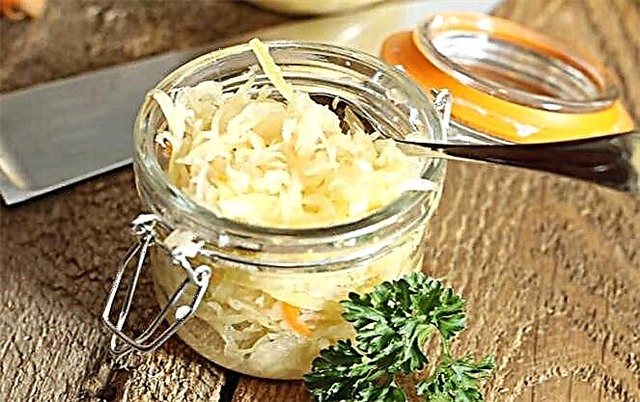
- Strudel is a traditional dessert, which is a dough rolled into a tube with a sweet filling. You can even cook it at home. To do this, use puff pastry, and take an apple or cherry, cottage cheese, poppy for filling. However, the original filling for the strudel was cream. Served with cream, hot ice cream, chocolate syrup.
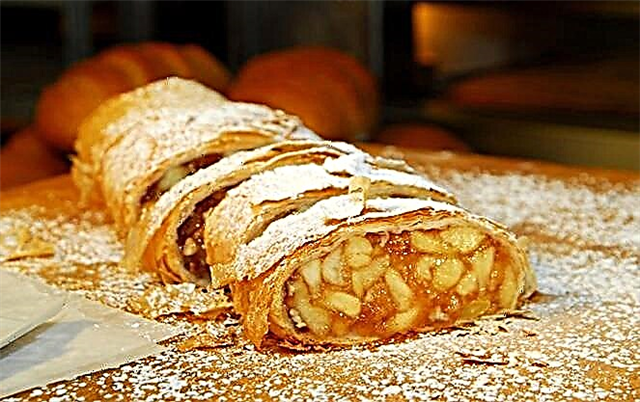
- Eisbein - pork knuckle. Translated from German it means "ice leg". This name has two interpretations. The first is based on the fact that this delicacy is prepared for Christmas, until which it is kept frozen. And the second came from the appearance of a ready-made dish, which shines under a golden crust so that it seems as if it is covered with a layer of ice.
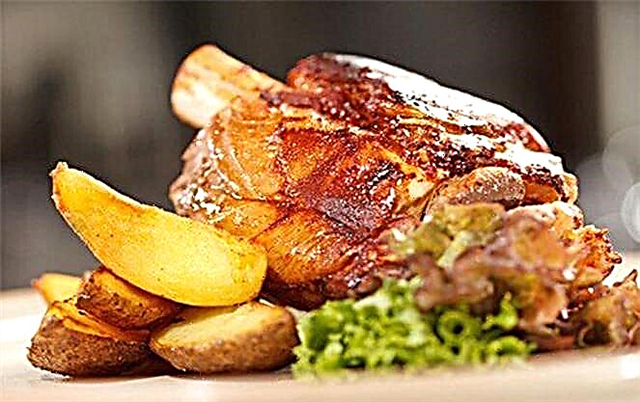
- Potato salad. The recipes for this treat have many variations in Germany, since each housewife has her own secret of its preparation. As you might guess, its main ingredient is boiled potatoes.
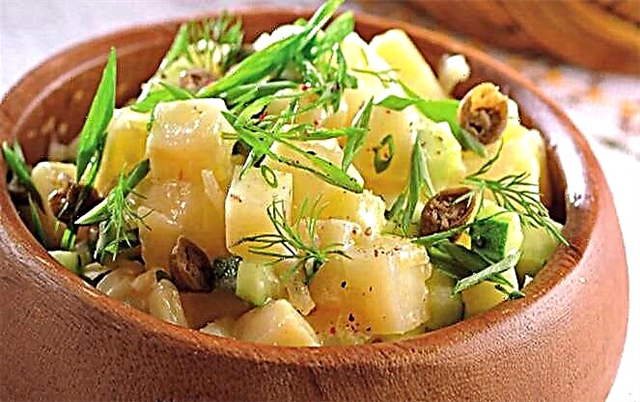
- Marzipan. Although Germany is only a contender for the title of the homeland of this product, it can be included in the list of traditional German dishes. It is usually prepared from almonds.
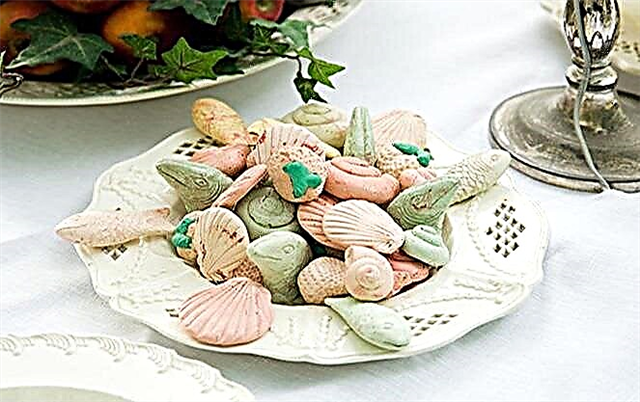
- Eintopf is a very thick soup that most often replaces both first and second courses. A variety of ingredients can be added to it: legumes, potatoes, pasta, meat, sausages. Judging by the name, which translates as "one saucepan", the Germans add everything to this treat at once, which makes it satisfying and nutritious. He is credited with a village origin, which was due to the desire of German housewives to feed all family members at the same time.
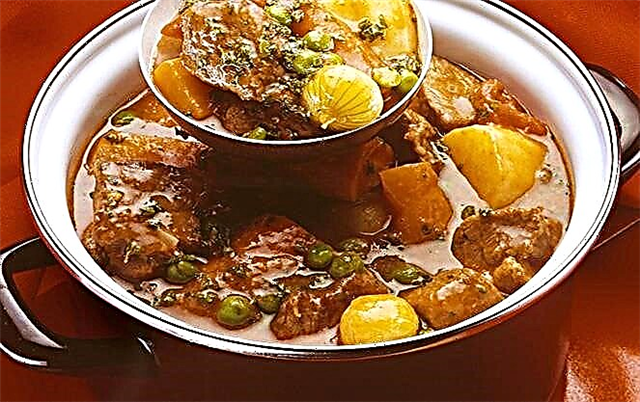
- Spetzle - egg-based pasta with a coarse and porous structure. They can be round (knepfle) or oblong (spatzen). Served with cheese as a separate dish, but is most often used as a side dish.
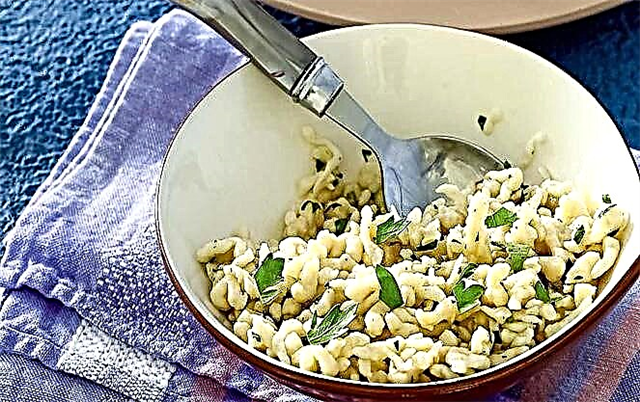
- "Black Forest" - a cake made of chocolate biscuits soaked in cherry syrup or smeared with a jelly-like cherry mass.
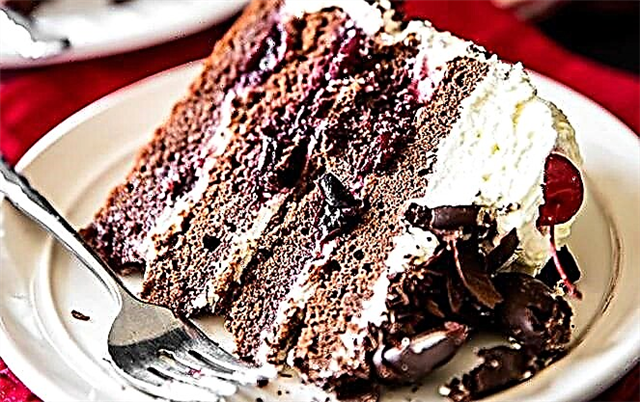
- Mettwurst is a must-have for a German breakfast. It's a crunchy soft bun topped with peppery pork or ground beef and onions. Moreover, the minced meat does not undergo almost any heat treatment, except for light smoking.
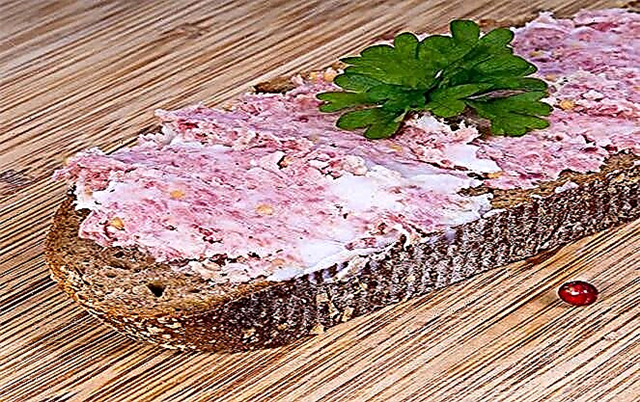
German culinary traditions
As for the German food culture, it has a number of notable features:
- The German breakfast is usually very light. It consists of a slice of bread with butter, jam, or cheese. On weekends, most residents of the country prefer to have breakfast rather late, and therefore this meal can be a little more satisfying and include bacon, sausages, buns, eggs in any form.
- They dine here at noon (on weekends, lunch time shifts closer to two o'clock in the afternoon). This meal is considered the main one in Germany for the whole day. For lunch, an obligatory eintopf or cream soup, a dish of meat and vegetables, potatoes or rice is served. This part of the daily menu should certainly be completed with a dessert.
- Germans usually dine in a noisy company of friends and relatives. Often this meeting takes place in a tavern or pub. The evening meal also consists of several dishes, but they may already be less satisfying. Evening is time for pork knuckle and grilled sausages, and, of course, beer with hot snacks.
For Christmas, the Germans prepare a traditional cake ("adit"), several types of cookies, bake goose, carp or salmon. Asparagus cooked with pork sauce is also considered a festive dish. In winter, mulled wine is more popular in Germany than beer.
What do the Germans drink
Some features are also observed in the addiction of the Germans to drinks.From non-alcoholic ones, they prefer coffee with cream or milk, fresh juices, jelly and tea.
Beer occupies the leading place in the German menu. In Germany, it is represented in a huge variety of varieties.
Many festivals are dedicated to him (the most important Oktoberfest), and tourists are often offered excursions to the brewery, where they can taste the country's main drink with a variety of snacks.

Vineyards and wine factories are located in the Rhine region.
Do not forget about bread vodka - schnapps. It is not as strong as the one that tourists from the post-Soviet space are used to, but it is easy to drink due to its mild taste.
Summarizing
Even the ancient Roman historian Tacitus described the cuisine of the German people as simple but satisfying. When planning to visit Germany, keep in mind that you will want to try everything at once: it is very difficult to resist the provocative smells of freshly cooked meat, baked bread and foaming beer. But be prepared for the size of the portions in the local establishments to surprise you with their size.
Points to remember about German culinary traditions:
- it is not customary to add spices to food here;
- staple foods: pork, bread, legumes, potatoes;
- national dishes: sausages, eintopf, knuckle, strudel, sauerkraut or stewed cabbage;
- in every region of the country you can find something that is characteristic only of this land;
- popular drinks: beer, schnapps, wine.












